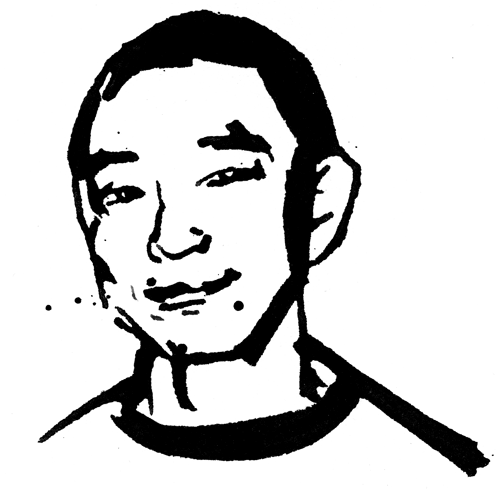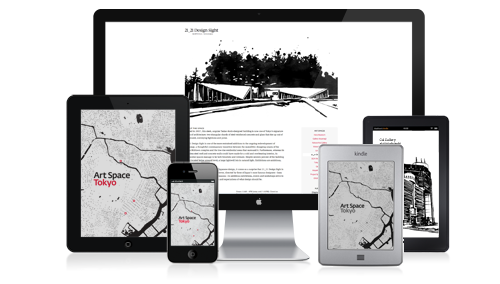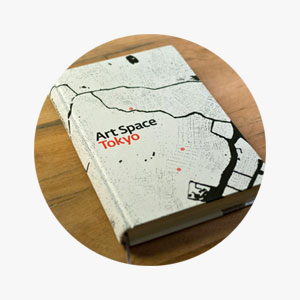The State of Art Journalism
& Criticism in Tokyo
by Tetsuya Ozaki
In 2003, when I began publishing my Japanese/English bilingual quarterly art magazine ART iT, it was with an extremely simple premise in mind. Let me quote from the foreword to the first issue:
The Tokyo culture scene and the Japanese art scene are closed. Isolated. More tragically, very few Japanese are aware of that reality.
It is isolated because there are no media exposing it to the outside world. To put it simply, there is very little information disseminated in English. The controversy as to whether English should be uncritically recognized as the lingua franca aside, the real problem with all-Japanese media is the difficulty of conveying information abroad, both in terms of volume and time.
Being closed off poses a domestic problem as well. Like humming tunes in the bath, or amusing oneself singing karaoke in a soundproof booth, closed discourse is unexposed to criticism, thus it is never tempered. Insider favor, scratching backs, inside stories often result in nothing more than self-euphoria. Without international communication, there is no journalism.
THE LACK OF PRIMARY INFORMATION LISTINGS
These thoughts were also part of the reason I set up Realtokyo in 2000. Realtokyo is a bilingual online culture magazine that gives event information not only about art, but film, theater, music and other fields. Criticism in Japan is in a sad state, but even before coming to that question of criticism, there was the need to address the vital lack of any media that offered efficient listings of cultural activities, exhibition information and so on. There were very few sources of information in languages other than Japanese, meaning that there was no kind of shared platform that could facilitate the exchange of opinions with foreign readers living in Japan or abroad. Unless you could understand Japanese, just trying to visit a single exhibition could potentially leave you feeling ‘lost in translation.’ I founded Realtokyo and ART iT with the aim of doing something to change this state of affairs.
The problem wasn’t only limited to art; the media offered very few sources of primary information regarding any cultural event at all. One such source was the Japanese-only cultural listings magazine Pia, largely produced by film-enthusiast students and founded in 1972. But before that, when looking for film schedules, art exhibitions or live music events, with the exception of specialist magazines, you had only newspaper listings to refer to and no newspaper covered art events comprehensively.
At that time, the release of a compact and convenient publication like Pia was welcome, and yet from the mid-1980s, there was a decrease in articles being written about art. Pia started its ticketing service, which led to information about galleries and museums, both of which either charged no entry fee or very low fees, losing out to information about high-grossing films, theater, music and sports events.
From the mid-1990s onwards, with a global art boom taking place, general interest magazines or fashion magazines increasingly commissioned special features on art, and more and more articles on acclaimed up-and-coming artists or highly popular exhibitions began to appear. While magazines such as Brutus produced features of a very high standard, few sources offered comprehensive listings. With the exception of The Japan Times, Daily Yomiuri, Tokyo Journal or Metropolis, until recent years bilingual publications or Englishlanguage newspapers and magazines aimed exclusively at a foreign audience were barely in existence. Furthermore, while the newspapers and Metropolis would occasionally publish a damning review of something, for the most part these publications’ reporting on art was so shallow as to be pathetic.
THE LACK OF ENGLISH-LANGUAGE PUBLICATIONS IN ASIA
Without getting into the complex debate over the legitimacy of the world’s acceptance of English as its lingua franca, the current reality is that people in East Asian countries generally do not have a good command of English. Whether this is due to the fact that many of them have escaped colonization by Britain or the United States, or questions of educational systems or international trade relations is too complicated to consider in detail here, but the end result is that there are few situations in everyday life that require East Asian people to make use of English.
This lack of effective English ability in East Asia has repercussions that are a little more significant than Bill Murray finding himself confused in Tokyo: it hampers mutual understanding between the East Asian countries themselves. Art fans are losing out greatly without even realizing it.
It goes without saying that art originated in the West, and contemporary art derives primarily from Europe and the United States. With the spread of anthropology and cultural relativism, the decades after the Magiciens de la Terre exhibition held at the Pompidou Center in 1989 have witnessed an increase in multiculturalism. However, for the most part there has been no change in Western art’s assured status as the center of importance. In short, all other forms of art have had their development stymied at the most rudimentary levels.
The result is that almost everybody within the contemporary art world adheres to the Western-centric version of art history and extols the virtues of work by Duchamp, Beuys and Warhol. They subscribe to ARTnews and Artforum and follow the latest developments in Matthew Barney or Damian Hirst’s careers. They go to Venice and Kassel, and they attend the four big art fairs in New York, Basel, London and Miami. In recent years, the Chinese art bubble has drawn people and money to Beijing, Shanghai and Hong Kong, but in reality this is currently only a fledgling scene. Flush with dollars and euros, this incipient scene is a well-connected one, but I suspect that financial support will bottom out.
In short, the global art world has a treelike structure, with information flowing in one direction only, from the trunk up into the branches. The East knows the West, but the West does not know the East. Nor does the East have a mutual, shared knowledge of itself: Tokyo, Taipei, Hong Kong, Bangkok, Seoul, Jakarta and Beijing are all unfamiliar with each other. Art media exists in all of these countries, but they all remain short of information about what goes on outside of their own borders. Perhaps one can say that information about China is fairly well spread among these countries, but if this state of affairs does not diversify beyond this point, then it will all collapse overnight as soon as the Chinese bubble bursts.
FROM A TREE TO A RHIZOME
At long last, in recent years there has emerged a movement to change this treelike structure into what Gilles Deleuze and Felix Guattari call a ‘rhizomelike structure.’1 The Internet—itself a rhizomelike media—is the driving force behind this movement. While many of Japan’s museums and gallery websites remain in Japanese only, after Realtokyo, the next bilingual art website to appear was Tokyo Art Beat, launched in 2004. In addition to listing Tokyo’s art and design information, Tokyo Art Beat also features TABlog, a blog-style publication that presents a broad range of art news, exhibition reviews and interviews. In October 2007, ART iT’s website was relaunched to display the exhibition calendar that was previously published in the magazine. Shifting this feature to the Web made it possible to update our listings of exhibition information in the Asia-Pacific region—as well as publish reviews—to a degree that was not previously possible in the quarterly magazine format. Until recently, the long established website Artscape (launched in 1996) had been published almost entirely in Japanese, but as of 2006 it started an English version, and on a monthly basis features a number of English-language reviews written by Japan-based art writers.
Of the English-only media available on the Web, there are several personal blogs. Among them, Roger McDonald’s Tactical Museum Tokyo stands out as by far the best. McDonald is a Tokyo-based independent curator and one of the founding members of the NPO Arts Initiative Tokyo, which seeks to facilitate the establishment of an alternative art scene. Always published soon after the event has begun, his reviews are written with the precision and depth of insight of an art specialist.
Japan’s art journalism does not actively report news from the art world. This is bizarre given how, as in other countries, people working in the art industry love gossip. In 2005, artist Tadasu Takamine’s works were examined for authenticity at the Yokohama Museum of Art and subsequently rejected, and in 2006, Shintaro Ishihara made yet another arrogant assertion at the opening reception of the Collection of the Fondation Cartier pour l’Art Contemporain exhibition at the Museum of Contemporary Art, Tokyo2—and yet these incidents were only reported in a small part of the mainstream media. Even if it means singing my own praises, it has to be stated that the most detailed articles on these incidents were in fact featured on Realtokyo.3
If you take all the above-mentioned publications and add favorite, a bimonthly free pamphlet published jointly by just over thirty major contemporary art galleries, it is possible to say that there is comprehensive coverage of all primary information regarding art events taking place in Tokyo.
The number of non-Japanese art lovers making use of all the aforementioned publications is thought to be steadily increasing. One hopes that the rhizome will extend its roots underground, where they will tangle up and allow nutrients to sp through all parts of the plant before bearing fruit.
THE POWERLESSNESS OF CRITICISM
While listings spread and galleries flourish, art criticism in Japan is in a stagnant condition.
For a start, there are few people writing art criticism. At the time of writing in February 2008, the website of the International Association of Art Critics Japanese Section (Japanese only; the English side seems to be permanently ‘under construction’) listed 160 members, among which are some who have already passed away, and a number of professors who barely produce anything. If you include people not affiliated with the Association of Art Critics, then there are perhaps only ten or so serious critics out there.
Secondly, the quality of media coverage is in decline. Japan’s most representative art magazine is Bijutsu Techo. Founded in 1948, this magazine was closely connected to the development of postwar Japanese art. It was read in Korea during the 1960s and ’70s, a period of military dictatorship during which the movement of people and information in and out of the country was restricted. The magazine follows developments in not only Japanese but European and American art as well. However, over the past few years Bijutsu Techo has been faltering and recently some issues have even come to resemble a job-hunting information magazine for young people aspiring to work in the art industry. In the midst of a long-term structural slump, publications that actually feature opinionated writing are barely selling at all. As a result, it is very hard for new publications to get started: when ART iT launched, it was declared “rash,” “absurd” and even “idiotic.”
Lastly, what are the readers after? It has long been said that today’s university students don’t read books, but it’s true. When it is broadly conceived that journalism should be aimed at a general audience and that criticism should be aimed at those who create, then you could say that the average person doesn’t necessarily need to read criticism. Do artists read? I can only answer based on my impressions, but barring a few artists such as Kenjiro Okazaki, Masaki Fujihata, Hideki Nakazawa and Chiezo Taro who are capable of excellent criticism, I suspect that the majority of them only read what is being written about their own work and their own exhibitions.
However, good art critics do exist, it’s just that their words do not resonate with artists, they have no influence, nor are they the driving force behind anything. Shuzo Takiguchi (poet, artist, art critic, 1903–1979), Tatsuhiko Shibusawa (scholar in French literature, critic, 1928–1987) and Suehiro Tanemura (scholar in German literature, critic, 1933–2004) were the three notable exceptions. During their careers they were engaged with a community of people that transcended the boundaries of professions: poets, novelists, artists, designers, playwrights, filmmakers, actors, editors and TV producers all gathered together with them in smoking salons where they engaged in fierce discussion. In the present age, there is no such culture.
Neither Japan, nor any of the non-Western countries that have been left out of the official annals of ‘Art History’, has produced any original artistic expression without basing it on this kind of cooperation or mutual influence that transcends professional boundaries. Works that have, reflecting the borderlessness of contemporary social reality and comprising contents and formats that transcend the categories of high culture and subculture, are perhaps the only pieces that one can declare to be original.
If art criticism is aimed at creators, then it has a solid raison d’être and a central role to play in the art movements of the future. Thus, in the current absence of an energetic culture of dialogue between critics and their peers working in other fields, the key to reinvigorating art criticism in Japan lies in the rhizomes of bilingual printed and online media. As a journalist who is trying to play his part in this process, I would like to give a modest shout of support to any criticism that emerges out of these intricate rhizomes and really challenges the way people think.
- Some plants and tubers have thick stems that grow along or under the ground, from which further roots and stems grow. Deleuze and Guattari use the word to describe multiple, nonheirarchical entry and exit points in data representation.↩
- Held from April 22 to July 2, 2006.↩
- In this report, Ishihara’s words are paraphrased as follows: “I heard it was a fantastic exhibition, so I came looking forward to it, but in the end it hasn’t amounted to much. Everything here is of bizarre taste.”↩
About the Author
Born in 1955 in Tokyo, Tetsuya Ozaki is the publisher and editor in chief of Realtokyo.co.jp and Realkyoto (website due to be relaunched in 2012). He is also Editor-in-chief for Insight Diaries. From 1989 to 1990 he worked as the associate editor for 03 TOKYO Calling and in 1996 he was responsible for the editorial direction for the Japan theme pavilion at the Internet Expo. Formerly a Guest Professor of Art Journalism, he is now Guest Researcher at the International Research Center for Comparative Art Studies, Kyoto University of Art and Design. From 2003 to 2010 he was chief editor of ART iT. He is the general producer for the performing arts section of the Aichi Triennale 2013.


